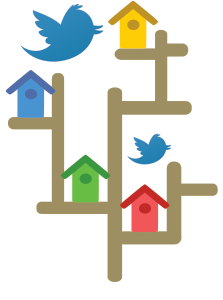If you enter #EMTOT (Emergency Medicine Tricks of the Trade) into a Twitter search you’ll  certainly find some clever ideas. But this hashtag isn’t used as often as it could be. That doesn’t mean there aren’t a slew of tweets that fit the category. Here are five recent posts that should have been tagged #EMTOT, but weren’t.
certainly find some clever ideas. But this hashtag isn’t used as often as it could be. That doesn’t mean there aren’t a slew of tweets that fit the category. Here are five recent posts that should have been tagged #EMTOT, but weren’t.
Explore This Issue
ACEP Now: Vol 33 – No 07 – July 20141 Canadian EM physician Ken Milne, MD (@thesgem), kicks things off with one of my personal favorite tricks. “…How about cranking tunes to distract peds during procedures? http://thesgem.com/2014/06/sgem78-sunny-days-pediatric-pain-control/ #FOAMed #MedEd.” The link goes to the blog post associated with Dr. Milne’s latest episode of his increasingly popular podcast, The Skeptics Guide to Emergency Medicine (tagline: “Meet ‘em, greet ‘em, treat ‘em, street ‘em”). Letting kids listen to music is not just being a nice doctor—it is evidence-based! Dr. Milne and his guest Anthony Crocco, MD, division head and medical director of pediatric emergency medicine at McMaster University in Hamilton, Ontario, discuss the 2013 JAMA Pediatrics paper “Music to reduce pain and distress in the pediatric emergency department. A randomized clinical trial.”1 They conclude that music can help control pain in children requiring painful procedures. The data aren’t as overwhelming as one might hope, but the study does support the practice. If nothing else, EM providers should have a low threshold to embrace inexpensive, safe, and patient-centered modalities whenever possible. Ideas like this might save the need for yet another needle.
2 On the other hand, sometimes another needle is necessary. But maximal pain is not. This is why small-bore “pigtail” chest tube catheters are beginning to replace conventional chest tubes for stable pneumothoraces, small hemothoraces, and pleural effusions. Mayo Clinic EM physician Daniel Cabrera, MD (@cabreraERDR), relays a short, free, and crystal-clear video (that’s a #FOAMed trifecta) produced by the department of emergency medicine at the University of Ottawa: “How to place a chest pigtail catheter, by @emergmedottawa Pig Tail http://youtu.be/nrxuZwFpigI.” This video is a reminder that, for some procedures, video-learning is an indispensable tool.
Letting kids listen to music is not just being a nice doctor—it is evidence-based! Ideas like this might save the need for yet another needle.
3 Our next trick-of-the-trade tweet comes from Australian flight and retrieval medicine guru Minh Le Cong, MBBS (@rfdsdoc). This trick is not ready for prime-time use in the ED setting, but worth sharing (disclaimer: the research came from my own institution). “Mount Sinai psychiatrists prove feasibility and safety of intranasal ketamine as rapid antidepressant. http://www.mountsinai.org/about-us/newsroom/press-releases/intranasal-ketamine-confers-rapid-antidepressant-effect-in-depression.” In the future, this therapy might be an effective stopgap for psychiatric patients not requiring emergent admission or psychiatric consult, but who would benefit from short term help until connecting with their outpatient provider.
4 On a completely different note, there is always room for improvement in the way we perform CPR. No amount of training prepares providers for the adrenaline of a real code. Despite some effort, I can’t seem to get my colleagues to slow down their CPR compressions to the desired rate of 104 compressions per minute. In a recent simulation study I ran, I noticed that out of 30 chest compression providers, not a single one administered compressions too slowly. Most were too fast, some by a substantial margin. In real life, many of us have tried addressing this by playing a metronome during CPR. Unfortunately, the effect seems ephemeral and minimal. The problem stems, I believe, from people not knowing that “hard and fast” compressions can actually be too fast. But @TakeHeartAust (a nonprofit Australian organization aiming to improve CPR survival rates) has an idea. Don’t just tell your colleagues and students what to do, but also tell them why. Their short tweet sums it up elegantly: “CPR – when you push down say “BRAIN”, when you release say “HEART” [because] that’s how/when YOU are supplying them with blood!” Systole-diastole. Systole-diastole. I’ve already noticed that when a provider knows why the rate of compressions matters, they tend to better adhere the recommended rate.
5 Rounding out the list is the tweet that inspired this month’s column. Casey Parker, MBBS (@broomedocs) is a general practitioner and hospital district medical officer in Broome, Australia and the creator of the excellent broomedocs.com emergency medicine blog. Dr. Parker challenges us to be creative and resourceful by presenting a case scenario, while imposing several interesting restrictions. It is one thing to solve a case and another to do so with your hands tied behind your back. Dr. Parker asks us to diagnose and treat a complicated patient without formal radiology or lab tests, other than point-of-care blood gas results. I refer to this type of exercise as “post-apocalypse medicine,” but Dr. Parker has a nicer name for it. “Midnight MacGyver Medicine http://broomedocs.com/2014/06/clinical-case-103-midnight-macgyver-medicine/…Some great responses from the smart #FOAMed faculty.” I heartily agree. Many impressive responses were posted in the blog’s comment section, coming from top EM minds all over the world, a great example of asking EM providers to think outside of the box and a yeoman display of the power of social media to generate high-level discussion and the sharing of ideas.
 Dr. Faust is an emergency-medicine resident at Mount Sinai Hospital in New York and Elmhurst Hospital Center in Queens. He tweets about #FOAMed and classical music @jeremyfaust.
Dr. Faust is an emergency-medicine resident at Mount Sinai Hospital in New York and Elmhurst Hospital Center in Queens. He tweets about #FOAMed and classical music @jeremyfaust.
Reference
Pages: 1 2 3 | Multi-Page





No Responses to “Tweets from Emergency Physicians about Tricks of the Trade”